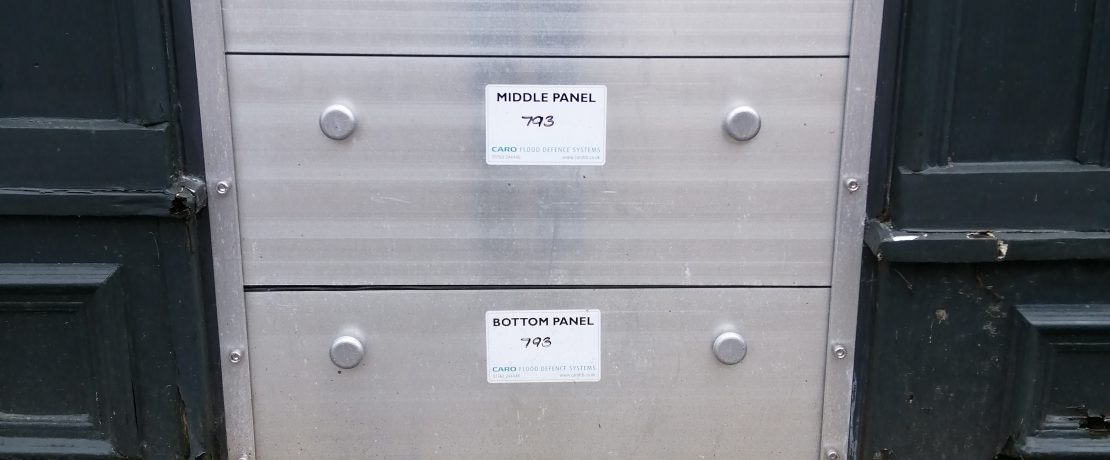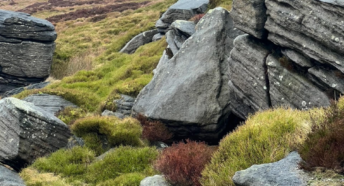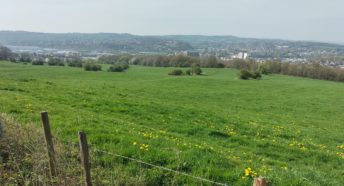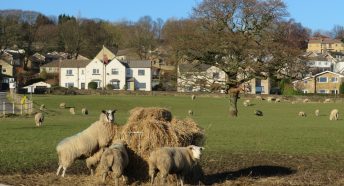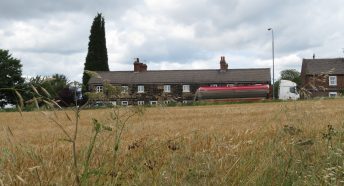Calderdale Flood Report
Who could not be affected by the recent pictures on TV, of Storm Ciara, showing raging torrents, shipping containers swept along like speedboats (until they hit a low bridge) and stoic residents of Todmorden, Hebden Bridge and Mytholmroyd cleaning mud out of their homes for the third time in less than 10 years. So; why is this happening? Is it all down to climate change?
The first thing to say is that flooding is not new to the Calder Valley in West Yorkshire. Most people of a certain age will remember severe flooding as far back as the 1950s. The fact is that rainfall throughout the Yorkshire Pennines is over double the national average and is at its most intense on the high moorland plateau which dominates the area. The moorland is sharply incised by steep sided narrow valleys and this combination of climate and topography makes fast flowing river flooding a natural, arguably inevitable, event. The Upper Calder valley is even more steep sided than most in the Pennines and would have naturally flooded long before our ancestors decided to build a trunk road, canal, railway, businesses and homes in the constricted, flood prone, main valley bottom. In reality there was nowhere else to build them because the valley sides are too steep and the moorlands too high. It is hard to be certain whether the flooding has got worse in the last few years, as a result of climate change, but it certainly seems more frequent. The recent rainfall associated with Storm Ciara was an incredible 86mm in less than 12 hours and the river levels between Todmorden and Mirfield (22 miles downstream) were also the highest on record. So; if we accept that the Pennine climate, topography and valley settlement pattern are the underlying causes of the flooding, what can we do about it?
Reversing the effects of climate change will inevitably take time to achieve and not necessarily solve all the “natural” flooding problems in the Calder Valley. So we have to look at other solutions as well. Under the umbrella of the “Calderdale Flood Partnership”, a lot is already being done by many public, private and charitable organisations, including Calderdale Council, The National Trust, Canal and River Trust, Yorkshire Water, Moors for the Future, Pennine Prospects, Natural England and the Environment Agency. A total of £55 million has already been spent since 2015 and the final bill will approach £100 million. Ironically Storm Ciara struck just months before completion of the Mytholmroyd flood defence scheme and the village was badly flooded yet again. The next major river engineering scheme in the programme will help to alleviate flooding in Hebden Bridge.
Conventional river channel and drainage schemes certainly have a strong part to play but a more natural part of the whole flood alleviation programme has been designed to slow down and reduce the peak flow of water off the moors. This involves building “leaky dams” on tributary moorland streams, extensive tree planting in the moorland “cloughs”, regeneration of upland peat bogs & vegetation and using some of the capacity of upland water supply reservoirs as storm water storage. One enterprising furniture shop has built a brand new showroom, with the sales floor well above flood level. The ground floor is now just a car park, which easily floods but is also easily cleaned up when the river level subsides. The local cinema in Hebden Bridge was flooded out on Saturday but back in business by Wednesday. The owners say they could bounce back so quickly because they learned lessons from the last major flood and now know exactly how to deal with it. There isn’t one silver bullet to cure the flooding problems in the Calder Valley but a lot of organisations and local people are trying very hard indeed to mitigate the flooding in different ways. You have to admire their commitment and resilience.
Footnote: The Calder Valley has suffered badly from flooding in recent years but, perhaps because of that, all parties in Calderdale understand the problem and are now pulling together to deliver urgent improvements. It would be nice if we could say the same for other Councils and Council areas. Far too many regard potential flooding as a “risk worth taking in order to deliver the ambitious housing numbers set out in the Local Plan”. CPRE is working very hard to correct that rather misguided view and persuade Councils to take drainage and the threat of flooding seriously.
